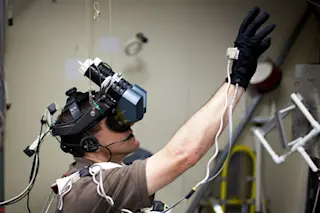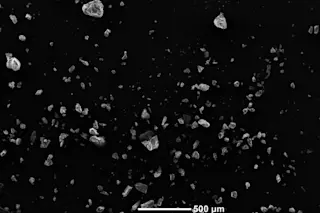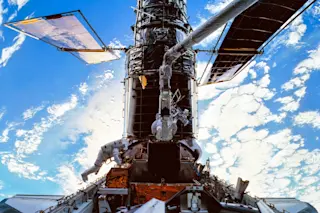Dottie Metcalf-Lindenburger waves and smiles from inside her space suit as a bright yellow crane slowly lowers her into the world’s largest indoor pool. As the water closes over her head, a trio of divers swarm around her. They detach her 200-pound suit from its restraints and guide her down to a life-size replica of a portion of the International Space Station that hulks on the pool’s floor like a sunken galleon. The divers gently spin Metcalf-Lindenburger, 37, around and upside down as they fine-tune the flotation devices that render her neutrally buoyant—suspended underwater without rising or sinking, an approximation of zero gravity.
“Hearing me ok?” asks one of the technicians monitoring a video feed from the glass-walled control room overlooking the pool. “Yep, all set,” replies Metcalf-Lindenburger’s disembodied voice through the control room’s speakers. As she grabs a handrail on the faux space station’s exterior to begin her practice ...















